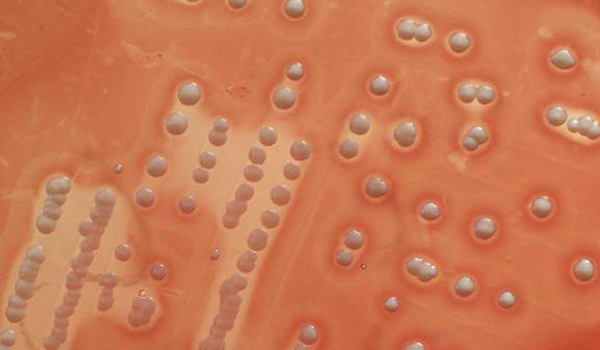Why Debilitating MRSA Infections Are on the Decline

Infections with the bacteria methicillin-resistant Staphylococcus aureus (MRSA) have declined in recent years, according to a new study.
The bacteria are perhaps best known for spreading among hospital patients, but people have also contracted infections from elsewhere in their communities; the data show that the rates of both types of infections dropped between 2005 and 2010.
In 2005, community-onset MRSA infections affected 1.7 per 100,000 people, on average, but by 2010, the number had fallen to 1.2 infections per 100,000 people. Hospital-onset infections dropped from 0.7 infections per 100,000 people to 0.4 infections per 100,000 people between 2005 and 2010.
The findings are based on data collected by the Department of Defense on more than 9 million active and nonactive military personnel.
The decreases mean that MRSA infections “still represent a large burden of disease, but at least there are some encouraging results,” said study author Dr. Clinton Murray, chief of the Infectious Disease Service at the Brooke Army Medical Center in San Antonio.
Murray said that he found the decrease in the rate of community-onset infections surprising. Prior to 2005, the rate had been rapidly increasing.
A deadly infection
Sign up for the Live Science daily newsletter now
Get the world’s most fascinating discoveries delivered straight to your inbox.
About 19,000 people die yearly from MRSA infections, according to the Centers for Disease Control and Prevention (CDC). About one in five of those who develop invasive MRSA infections, which take hold in the blood and spread throughout the body, die from the bacteria. People with open wounds, particularly those in hospitals, as well as people with weakened immune systems, are more likely to die from MRSA.
Community-onset MRSA infections often spread through locker rooms or other close-contact situations.
The study's results are promising, and confirm a previous report by the CDC suggesting similar decreasing trends, said Dr. Michael David, who researches MRSA at the University of Chicago and was not involved in the study.
While the exact reasons for the decreases are unknown, researchers think that improved hospital practices, such as better cleaning practices and increasing attention to the importance of sterile treatments for open wounds, have played a role, David said.
The research also showed that the percentage of MRSA infections that developed outside of hospitals may have peaked in 2006, at 62 percent of infections, before decreasing to 52 percent in 2010.
David said that while these numbers are a positive sign, rates of community-onset infections are still much higher than in previous decades.
"If a doctor left the States in 1999, and came back in 2010, [he or she] would be shocked," David said. Community-onset MRSA went from “never causing infection, to being the No. 1 cause," he said, and scientists are still trying to understand exactly why this happened.
More common in men
The researchers searched the health records of the 9 million military personnel, of which 82 percent were nonactive, and 52 percent were male.
Over the six years, the records showed 80,281 MRSA infections of the skin or soft tissue, and 2,643 cases of infections in the blood. The infection was more common in men and people over age 65.
The data used in the study did not include people's risk factors for developing MRSA infections, which is unfortunate, David said, because tracking such factors may have yielded clues as to which improvements in health care practices are having the biggest impact.
While the study was large, it was limited in that the people included represent a subset of the general population, and because all participants had certain levels of income and access to health care.
Additionally, the researchers noted they used data collected only by military hospitals; people with military insurance can choose to see private physicians, so some cases of MRSA may have not been accounted for. While this should not affect the decrease found in the study, it may mean that actual incidence of MRSA is higher than was found here, the researchers said.
Pass it on: Infections caused by MRSA are declining inside the hospital and out — but the reasons for the decrease are still unclear.
Follow MyHealthNewsDaily on Twitter @MyHealth_MHND. Find us on Facebook and Google+.
Measles has long-term health consequences for kids. Vaccines can prevent all of them.
100% fatal brain disease strikes 3 people in Oregon









